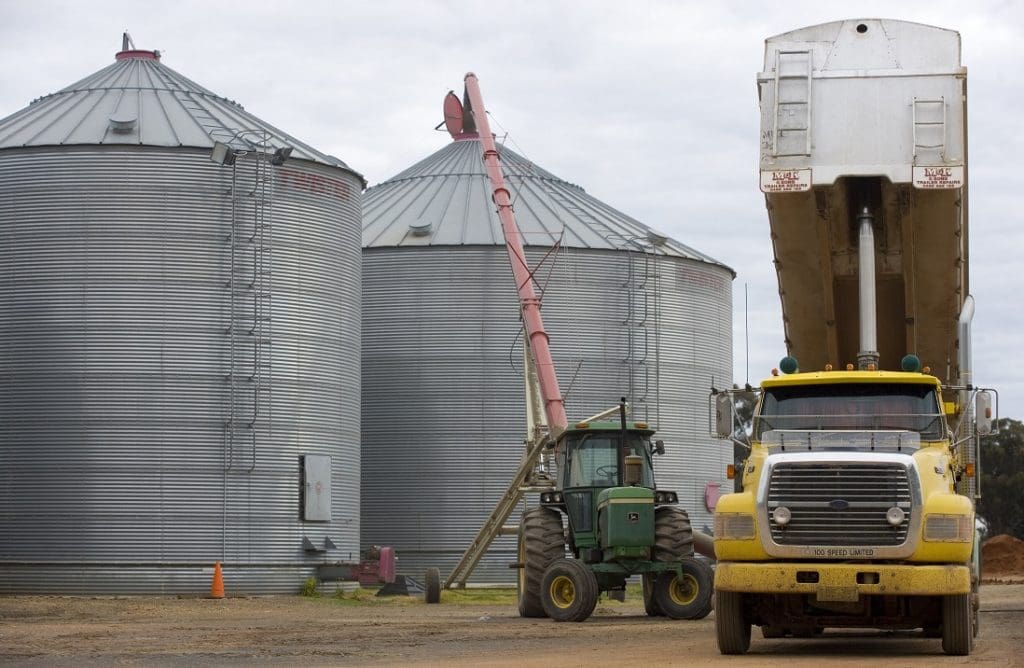
Grain storage systems can be inherently hazardous so any measures to increase safety are highly recommended. Photo: Paul Jones
GRAIN growers are encouraged to consider upgrading and improving their storage infrastructure in advance of this year’s harvest.
Storage expert Chris Warrick says now is the ideal time for growers to “take a step back” and look at where storage can be enhanced.
“Those improvements don’t need to be complicated or expensive – simple tweaks and adjustments can make all the difference in ensuring successful and trouble-free storage of grain from this year’s harvest,” Mr Warrick said.
“Ultimately, we should aim for best practice storage management for safer and easier to use systems.”

Chris Warrick says now is the ideal time for growers to “take a step back” and look at where grain storages can be enhanced. Photo: GRDC
Mr Warrick, who is also a consultant with Primary Business and co-ordinates the Grains Research and Development Corporation’s (GRDC) Grain Storage Extension Project, said regular maintenance of storage was essential.
“Make use of the weeks before harvest to fix damaged hatches, repair rust and other damage, check the seals, and conduct a three-minute half-life pressure test if the silo is gas-tight sealable,” he said.
“As part of that pressure test, check the oil levels in the oil relief valves. And if you need to replace the valves, consider replacing them with a larger valve that lets more air through.”
Mr Warrick said that while retro sealing could be applied to existing storages, the cost of doing so could be high and the success rate low.
“Rather than retro sealing, I would suggest investing the money in additional storages that are gas-tight sealable to the Australian Standard 2628.”
Adding aeration cooling to existing storages is a common form of upgrading infrastructure, providing considerable benefits in terms of grain quality and insect pest control.
Mr Warrick suggests installing one or two small fans per silo for efficient and effective cooling, and venting should be considered.
He said a small investment in monitoring equipment was justified given the amount of valuable grain stored on-farm these days.
“Insect traps and sieves, thermometers and moisture meters can greatly assist in monitoring grain in storage. And it’s also worth setting up and maintaining a system of keeping record of what you have detected and what you did in response,” Mr Warrick said.
Ladders and walkways should also be reviewed: “It’s important to be able to get to the top of the silo via safe and easy access so you know what’s going on within the grain stored in respect to mould and insects.
“Existing ladders can be improved with a cage, platform and handrails, and a walkway across multiple silos is a safe way to monitor grain. When working at heights, a safety harness is also advisable.”
Mr Warrick said grain storage systems could be inherently hazardous so any measures to increase safety were highly recommended.
“Safety is about identifying potential hazards, the likelihood of those hazards coming into play and the potential severity of incidents and accidents,” he said.
Tips to reduce hazards include:
- Installing danger signs to advise of overhead powerlines, especially if tip trucks and augers operate nearby
- Installing danger signs to advise of phosphine fumigation being undertaken
- Removing any obstacles that pose a trip or head knock hazard
- Blocking off child access to ladders
- Considering guards on augers, belts and conveyers
- Levelling gravel bases under augers to reduce movement
- Installing lighting for safe use of storage at night.
Source: GRDC
For more information about webinars and to register, go to http://storedgrain.com.au/event/webinar-planning-storage/ or contact Amy Harwood via [email protected] or 0456 979 561.
More information on all aspects of grain storage can be found on the GRDC’s Stored Grain information hub at http://storedgrain.com.au/.

HAVE YOUR SAY